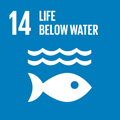- Docente: Elena Fabbri
- Credits: 6
- SSD: BIO/09
- Language: Italian
- Moduli: Elena Fabbri (Modulo 1) Paola Valbonesi (Modulo 2)
- Teaching Mode: In-person learning (entirely or partially) (Modulo 1); In-person learning (entirely or partially) (Modulo 2)
- Campus: Ravenna
- Corso: Second cycle degree programme (LM) in Environmental Assessment and Management (cod. 5900)
Learning outcomes
At the end of the course, the student possesses knowledge on organism-environment interaction and theoretical-practical knowledge necessary to measure and predict the effects of anthropogenic activities on living organisms at the molecular, cellular and individual levels. On this basis, it is able to apply environmental quality indicators, and use environmental and epidemiological data as part of the risk assessment.
Course contents
Principles of organism-environment interaction; emerging contaminants (endocrine disruptors, drugs, plastics and additives); main effects of contaminants on human and animal organisms; mechanisms of action at different levels of biological complexity (molecular, cellular and organism); mechanisms of action of natural hormones and endocrine disruptors; effects on the main physiological functions. Biomarkers as early warnings of the alteration of environmental quality. Biomonitoring of marine waters and waters intended for drinking in accordance with international guidelines.
Readings/Bibliography
Scientific articles, reports and international guidelines on the application and improvement of environmental biomonitoring and environmental and health risk assessment strategies.
Teaching methods
Frontal lessons and discussion of scientific papers
Assessment methods
The final exam aims at evaluating the achievement of the teaching objectives by verifying the knowledge on: organism-environment interaction; emerging environmental contaminants; main effects of contaminants on human and animal organisms; mechanisms of action at different levels of biological complexity; effects on the main physiological functions. Relationship between environmental factors and human pathologies. Environmental biomonitoring using biomarkers. Integration of chemical and biological analyzes to assess the quality of water intended for human consumption. The (written) exam will focus on two specific questions on the different topics covered. The questions are open-ended questions to which the student will be asked to provide concise but pertinent answers to the question. A question on a general topic, one on practical exercises, one on the organization of an environmental assessment / monitoring action.
Teaching tools
Power point slides and scientific papers
Office hours
See the website of Elena Fabbri
See the website of Paola Valbonesi
SDGs




This teaching activity contributes to the achievement of the Sustainable Development Goals of the UN 2030 Agenda.
